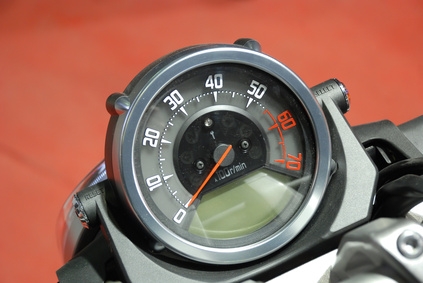
Once you're familiar with it, there's a lot you can tell about the way your car is running just by the sound and the feel of the engine. If your car has a tachometer, you don't have to use guesswork to diagnose its engine situation. Tachometers are devices that measure how hard the engine is working. Measuring the number of revolutions per minute, it's like a speedometer for the engine. Drivers on cars with manual transmissions should routinely consult their tachometer to ensure they're not stressing the engine and are driving at the most efficient engine speed.
Learn your engine's idle speed. Most engines idle around 1,000 RPM, though use of power brakes, air conditioning and power windows may draw that rate down.
Keep the RPMs on the tachometer from approaching your car's red line when accelerating. Shifting to a higher gear at 75 percent of the red line capacity should allow for enough power to accelerate at a rate acceptable for in-town traffic.
Keep your tachometer between 40 to 60 percent of red line when driving. Keeping the engine speed down reduces wear on the motor and extends gas mileage. You'll need to routinely to shift up and down to keep the RPMs in this range.
Avoid engine braking--sudden downshifts--when decelerating, which push the tachometer past the red line. This can damage the engine.